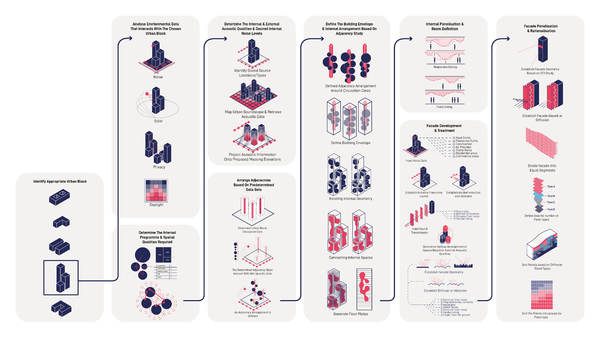This project forms part of 3 studio modules all of which have been leading up to this final output. Studio 1 was used as an experimentation of computational design processes, using the Serpentine Pavilion as a foundation to develop a thesis project. Studio 2 was defining the theory behind the design using the results from Studio 1, the project allowed us to further develop a thesis statement and develop a methodology of approach for the final output. Studio 3 was a formulation of theory, computational design approaches and architectural design. This allowed for us to propose a considered design approach with computational testing as a basis for justification. As a group we explored the impact environmental noise had on mental health and how an architectural response could be part of the solution using computational theories and design approaches we were able to not only visualise environmental noise but also test and develop architectural responses that responded to its environment. Throughout my masters education I have been part of the Complexity Planning and Urbanism (CPU) atelier and have developed a keen passion and interest for computational design. I have always been interested in the tectonics of structure and the environmental impacts buildings have on the environment around them, and computation allows me to explore these interests in much further detail.


